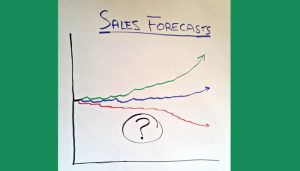Large companies use statistical techniques and predictive modeling that utilize regression analysis, weighted averages, exponential smoothing, etc. They have access to pools of data and operate in relatively stable environments.
Generally, small businesses don’t have access to such complex forecasting models or pools of data. They often operate in environments where one small change in the market or industry can have huge effects on the business.
However, there is a relatively simple way for small businesses to develop a sales forecast. This forecast and other knowledge discovered during the development process can be helpful in goal setting, operations planning, financial planning and risk assessment.
How to Develop Your Sales Forecast
Start by gathering two years of sales data. Depending on your business, you may want the data sorted by product type, service type, customer and/or time periods. What trends do you see among the categories? Just as important as identifying the trends is knowing why the trends are occurring. You may want to talk with a few of your customers for help in this area. Apply this knowledge to your sales forecast.
Look into the future. What changes may occur? For example, are you planning a new marketing campaign? Will you be introducing any new products or services? Are there any new laws or regulations on the horizon that could affect your business and sales forecast? Will there be any new marketing campaigns, products or services from competitors? Apply this knowledge to your sales forecast.
Many of these questions may have the answer of “maybe”. If so you may want to develop two or three sales forecasts based on different scenarios. Initial operations and financial planning may be based on the most probable forecast, however, contingency plans may be needed for less likely, but relatively possible forecasts.
Ultimately, you want your business operations to be flexible and adaptable to whatever actual sales turn out to be. Sales forecasts are educated guesses and are typically not pin-point accurate, much like the weather forecasts in Oklahoma. However, they can be useful in goal setting, operations planning, financial planning and risk assessment.
Let us know how we can help you by contacting us today.

